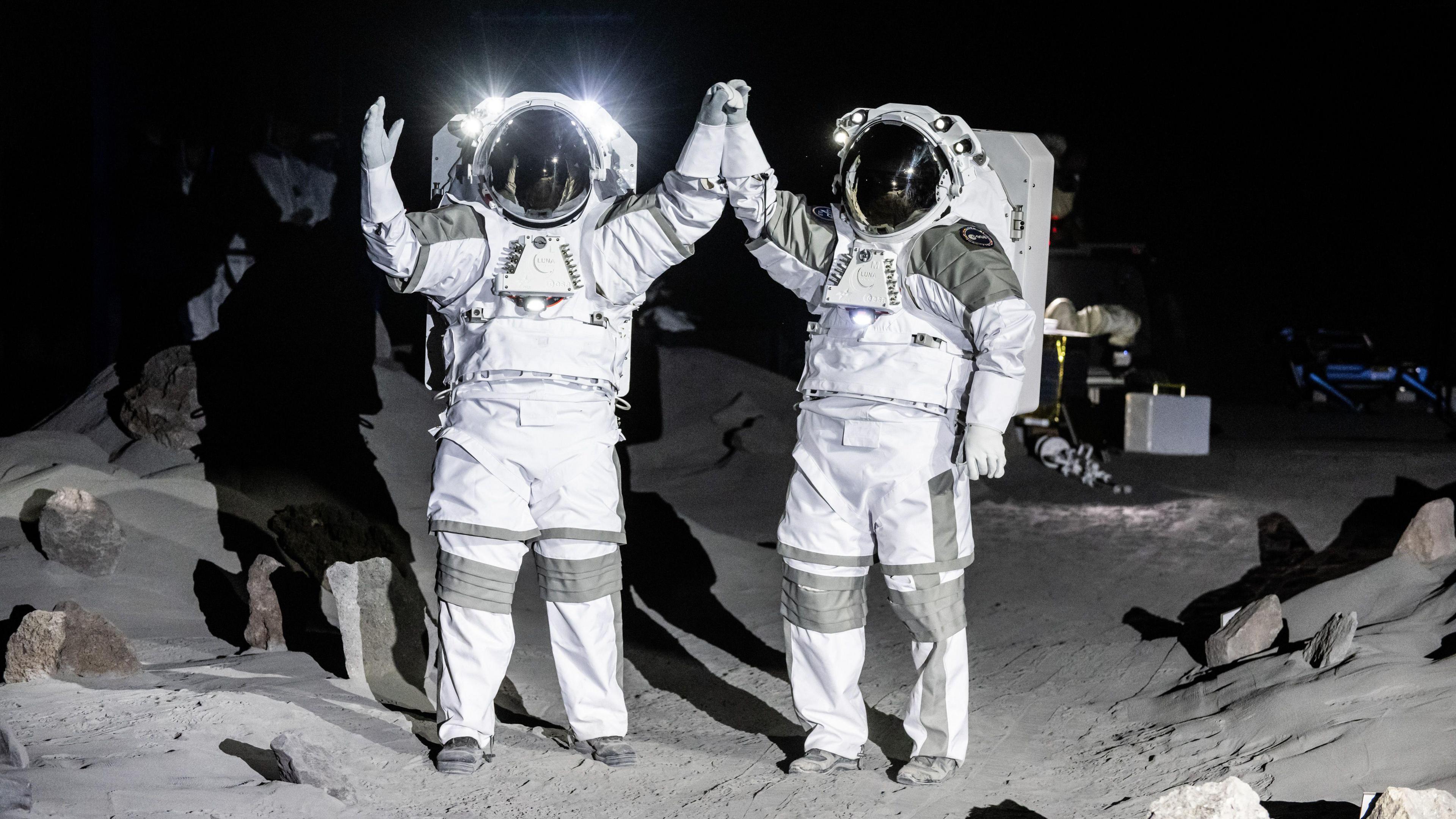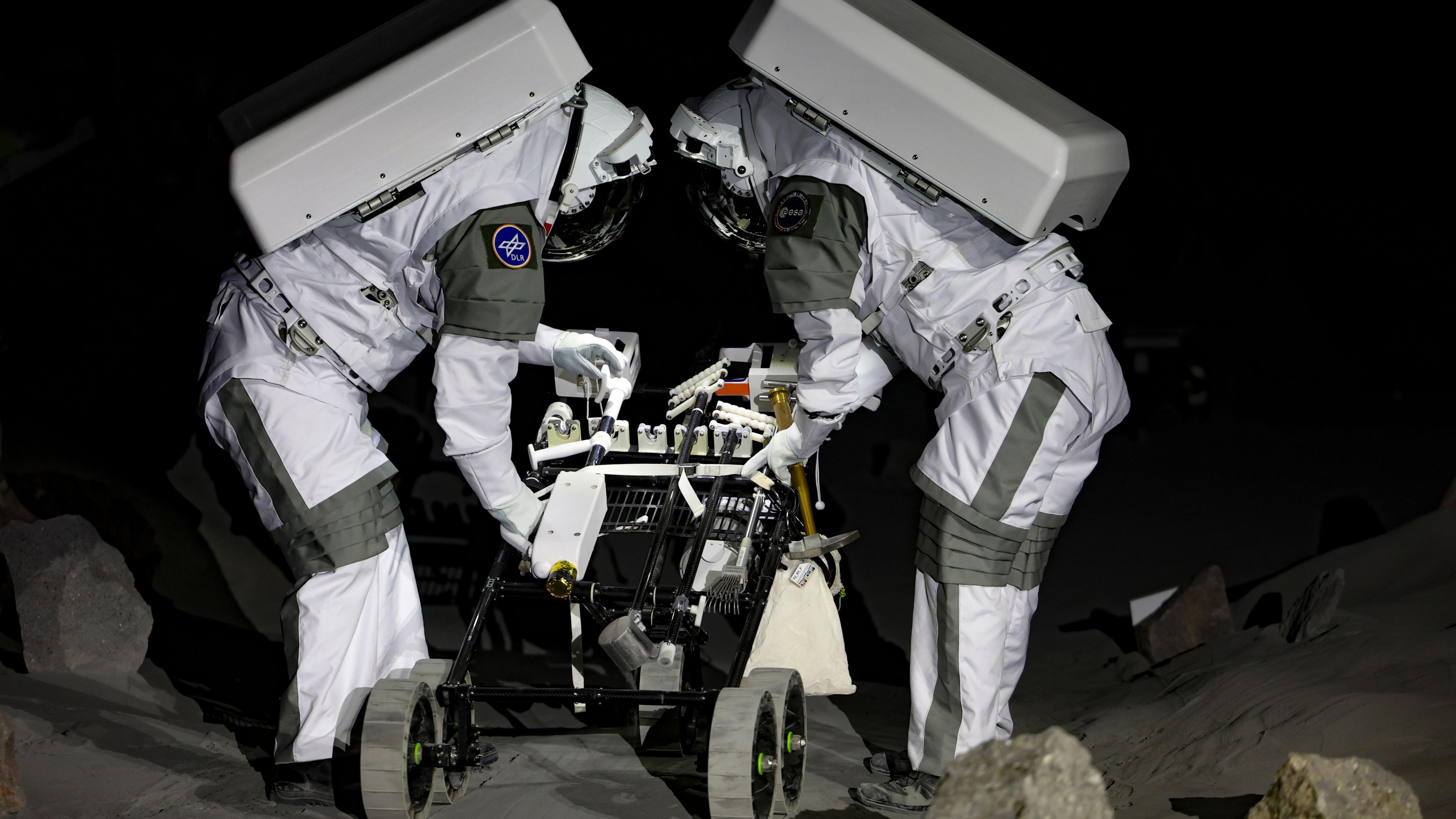Scientists build 'Moon on Earth' in Germany

- Published
Scientists have built an accurate copy of the surface on the Moon... on Earth!
It means that astronauts who fancy taking a walk on the lunar surface, can do so without leaving the planet.
The new facility is located in Germany, next to ESA’s (European Space Agency) European Astronaut Centre.
It's hoped that experts will be able to train and test equipment in preparation for future missions to the Moon.
More space news
Nasa rover spots black-and-white striped 'zebra' rock on Mars
- Published25 September 2024
Did Earth once have rings like Saturn?
- Published24 September 2024
Nasa scientists solve ‘spiders' on Mars mystery
- Published14 September 2024
Moon-training base for astronauts

The new project is located in the German city of Cologne and has been designed by the European Space Agency (ESA) and the German Aerospace Centre (DLR).
The 700-square-metre facility is around the size of three tennis courts and has been nicknamed LUNA.
It will serve as a training and testing ground, simulating Moon-like conditions right here on Earth.
It's been built from simulated lunar dust and rocks and, according to experts, it's the the world's most accurate copy of the Moon's surface.
It has a deep floor area which is able to be frozen to a depth of three metres - which will allow astronauts to practise drilling into the cold, hard lunar ground in search of water ice.

The lighting is also adjustable to recreate the Moon’s day-night cycle and the changing environment on the lunar surface.
LUNA will also soon be home to an artificial sun, which will be able to cast different shadows across the terrain and a harness system will allow astronauts to experience the bouncy gravity on the Moon.
It is also hoped that LUNA could help European astronauts secure places on Nasa's Artemis programme, which plans to return humans to the surface of the Moon in the next few years.
ESA astronaut Matthias Maurer explained: "It's a unique facility because it integrates so many different elements that nobody else around the globe has, not even NASA."
LUNA project manager Juergen Schlutz added that this new ecosystem should make it possible to "understand how to live and work on the Moon."
